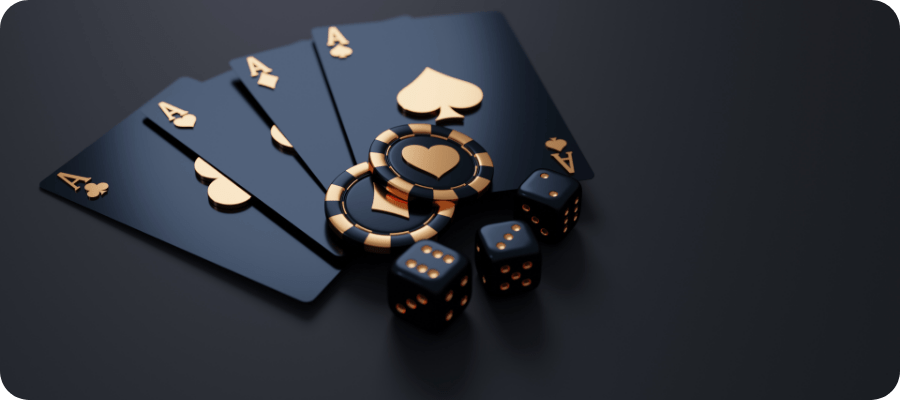[ez-toc]
Pro Tips to Dominate the Tables & Stop Losing Your Shirt!
Casino Cool
Some people assume that playing poker with crypto changes the way the game works — that it somehow needs a new strategy. But let’s be clear: poker is poker. Whether you’re playing at home, in a packed card room, or at an online table using crypto, the same core poker game tips apply. The biggest difference is in the transaction layer, not the gameplay.
So if you want to sharpen your skills and stop relying on luck to carry you, here are basic poker tactics and strategies that can genuinely improve your odds, whether you’re sitting at a Texas Hold ’em table or jumping into a hand of live blackjack online during a break.
Play Fewer Hands, But Play Them With Purpose
One of the most common mistakes casual players make is playing way too many hands. It feels fun, sure — more action, more flops — but it’s the fastest way to drain your stack. Even the best in the world know there’s a limit to how many starting hands you can realistically profit from in
No Limit Texas Hold ’em.
The key? Be selective, and when you decide to play a hand, play it hard.
That means adopting a tight-aggressive approach. Stick to a small, strong range of starting hands, and play them with conviction. This doesn’t just help your odds — it keeps your opponents guessing. When you raise with hands like pocket aces or suited connectors like 6♠7♠, your opponents can’t tell whether you’re holding monsters or marginal hands. That makes you unpredictable, and unpredictability is power in poker.
Stop Guessing Hands — Start Thinking in Ranges
Here’s where average players get stuck: they try to put their opponent on one exact hand. “Feels like he has ace-jack,” they’ll say. The problem? That kind of thinking is a trap.
If you want to step up your game, ditch the “gut feeling” reads and start evaluating hand ranges. Every player has a range — the full spectrum of hands they could realistically be holding in a given spot. That could be a flush, top pair, second pair, missed draw, or even nothing at all.
The best players don’t try to guess one perfect hand. Instead, they estimate the likelihood of each hand type in that range and use that information to make smart, profitable decisions, especially when calculating pot odds.
And here’s a tip: when in doubt, trust the math. Poker strategy is built on data, patterns, and probabilities — not instincts and hunches.
Never Be the First to Limp
Limping (just calling the big blind without raising) might feel like a safe move, but it rarely is. When you limp as the first player into the pot, you’re giving up the chance to take control of the hand, and worse, you’re inviting more players in, which lowers your odds of winning.
Instead, raise or fold. If someone else has already entered the pot, sure — there are spots where calling makes sense, especially if you’re in position. But as a general rule, don’t be the one who limps first. It signals weakness, and that’s not the image you want at the table.
Use Semi-Bluffs With Intention
Bluffing is not about being sneaky or clever. Done wrong, it’s just an expensive way to lose chips. Done right, it’s one of the sharpest weapons in your arsenal — especially when paired with a semi-bluff.
A semi-bluff is when you bet or raise with a hand that isn’t strong yet, but has potential. Think flush draws, open-ended straight draws, or even overcards. These are hands that can improve on future streets, which gives you two ways to win: either your opponent folds to the pressure, or you hit your card and take the pot anyway.
Bluffing blindly? That’s gambling. Bluffing with backup? That’s Poker strategy.
Forget About Your “Lucky” Hand
Everyone has a pet hand — that one random combination that, for whatever reason, you just like. Maybe it’s 9♣7♣ or Q♥10♥ — doesn’t matter. The point is, liking a hand doesn’t make it profitable.
Even if that hand has hit big for you once or twice, don’t let sentiment cloud your judgment. If it’s a weak starting hand in early position, it needs to be folded. End of story.
Remember: poker isn’t about superstition. It’s about math, logic, and consistent decision-making. Letting your emotions drive your play is a sure path to making bad calls.
What Is the Best Strategy in Poker?
So, what’s the best strategy for poker? Play smart, play disciplined, and manage your bankroll. Whether you’re grinding out a tournament or jumping in and out of cash games, those are your pillars.
That said, if you’re playing online, using crypto might give you an edge — faster deposits, fewer fees, and better bonuses on some platforms. But that’s just a bonus. It’s your Texas Hold ’em tips and how you apply them that will determine whether you come out ahead.
Crypto or cash, home game or high-stakes room, it all comes down to this: stick to strong fundamentals, stay unpredictable, and never stop learning.
